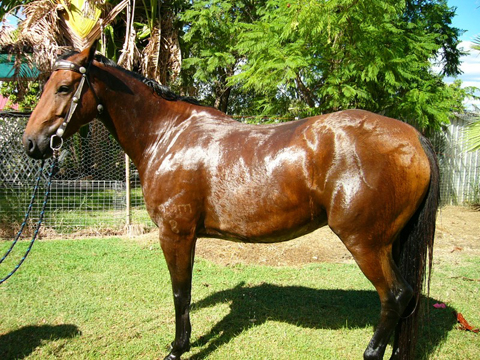
Today’s guest blogger is EN Jio.
This article first appeared on ezinearticles.com.
Trail riding is a great way to spend a lazy summer afternoon – you and your horse will enjoy the sunshine and the fresh air, plus a little bit of exercise never really hurts an animal. However, as much as you’re having fun, it might not be a bad idea to head back a little early and cut your ride a little short – why? Because you’ll need to ensure you’ve spent a sufficient amount of time cooling down your animal before turning him in for the night.
Steps to cool down your horse
Upon returning from a hard day of riding and exercise, you’ll probably notice a sheen of sweat on your horse’s body. Even in the winter, it’s important to cool your horse down and make sure his breathing and pulse have returned to normal. Horses that aren’t cooled down properly can catch a chill and get very sick as a result of improper care. Here are some steps for cooling down after a workout:
1. Walk the last bit home – when going for trail ride, take it easy on the last stretch and walk the last couple of Kilometers.
2. Take a load off – remove your tack once you get back to the stable and give your horse some room to breathe – you can leave the saddle pad on if you’d like.
3. Cool him down or warm him up – in the summer, your horse will enjoy a nice hose down with cool water first. Otherwise, start rubbing the animal down, paying special attention to the area where the saddle has been, as well as around the neck and flank area.
4. Rug up – if the weather’s particularly chilly or windy, put a cooler on your animal to keep him warm.
5. Walk and cool down – lead your horse around at a steady walk, keeping up a brisk pace as a sluggish horse tends to cool down too quickly. His breathing and heart rate should return to normal.
6. Lead your horse to drink – don’t give your horse anything to drink until he has cooled down as cold water in a hot belly can upset your horse’s stomach or even lead to a bad case of colic. Make sure the water is cool but not cold and let him have about a third of a bucket.
7. Check his legs – look for any signs of injury that he may incurred during the ride. Remove any stones that are lodged in his shoes – they’re particularly painful and can critically lame your horse.
